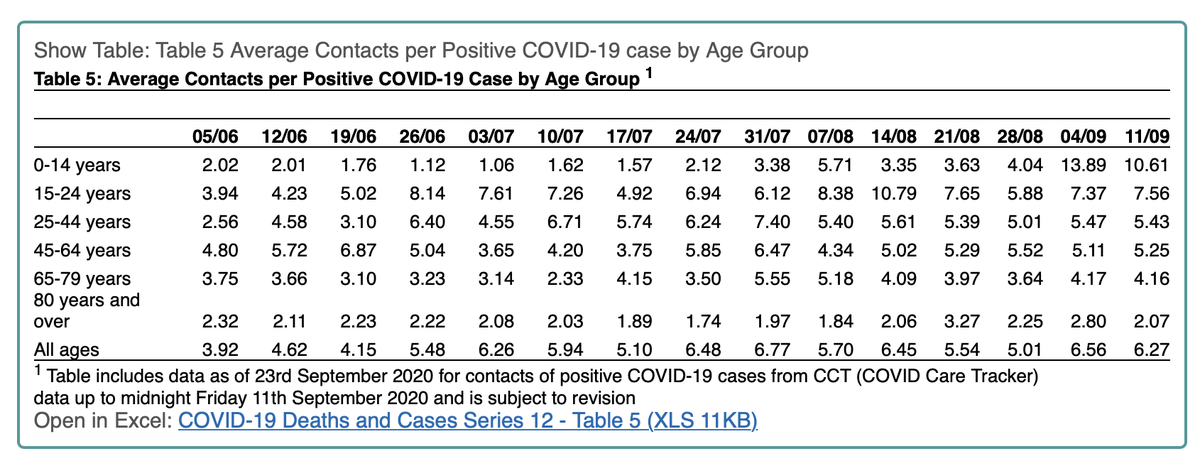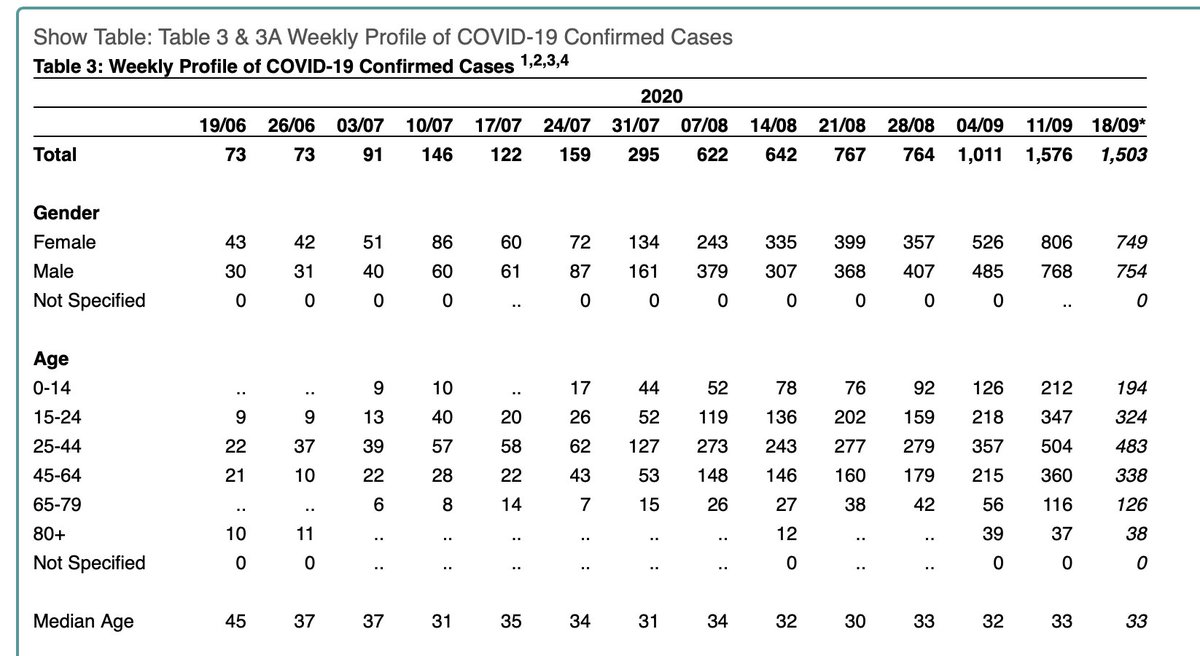There has been a lot of talk of importance of reducing contacts but from the CSO data it appears the rise in average contacts is entirely driven by school age 0-14 in weeks schools reopened. Other age groups are pretty static. Colleges opening will drive up 15-24 considerably /1
80+ clearly have no chance of further reducing contacts from 2 but rising numbers are still being infected despite the extreme caution such low average contact numbers must reflect. With 15-24 about to rise is compensation by 25-64 realistic, many of those must be work based /2
I& #39;ve heard an average of 4.6 contacts is when R is around 1. We are at 6.3 & colleges opening will push average up not down. Not clear there is any sort of realistic plan to balance that when you take work contacts into account. It& #39;s school ones that will have to be reduced /3
But the 0-14 group average contacts of 12 over last two weeks would give an R value in school settings close to 3 - thats March exponential growth level if kids are as likely to transmit to each other as adults. Unless I& #39;m missing something that& #39;s heading to disaster /4
It strikes me that while everyone else reducing contact will help the real task is to halve close contacts in eductional contexts. At the moment it seems instead CTing is told to find ways to not classify those within 2m as close contacts if possible (app alerts ignore this) /5
I get what& #39;s behind this is the correct idea that education should be a huge priority for society as a whole & sacrifices made to keep it open. The problem is the math above won& #39;t allow that to happen - there just isn& #39;t enough potential to reduce contacts elsewhere /6
The one narrow hope is that transmission between young kids will turn out to be very low indeed so it won& #39;t matter that they have 12 contacts. But the new cases for that age group have risen sharply (*3) & faster than older groups (*2) going back 6 weeks /7
Does that not suggest that this is not & #39;community transmission& #39; coming into schools but infection within schools? That is going to be disguised by
1. Parents then being infected
2. Severity being more noticeable in parents so they may be mistaken for index case
/8
1. Parents then being infected
2. Severity being more noticeable in parents so they may be mistaken for index case
/8
And whatever of that hope for 0-14 year olds I& #39;ve not seen anyone argue that transmission is any different for 15-24 year olds. This includes the college age group whose contact numbers are about to spike when they are put in rooms with token 1m nose to nose spacing /9
Clearly given the announcement that all 3rd level is to go online for 2 weeks I& #39;m not the only one that has been looking at the above data and noticing that average contacts can& #39;t be brought down enough by older people sacrificing their social lives to keep eduction open.
This mess has to be laid at the door of the government who choose the & #39;wing and a prayer& #39; route rather than accepting that eduction is way too crowded & class sizes had to be halved by whatever means were available. None of the cheap ways out have proved cheap in reality.
I don’t know about you but these look a little bit like exponential growth to me https://twitter.com/louiswu1992/status/1309557184917835776">https://twitter.com/louiswu19...
There is quite a lot worth reading in the replies to this thread, especially from a few people whose knowledge around R number calculations & plots is well ahead of mine. So I& #39;d recommend working through them for nuance that is missing in my tweets on those topics

 Read on Twitter
Read on Twitter



